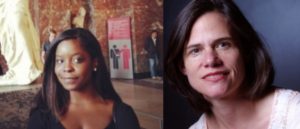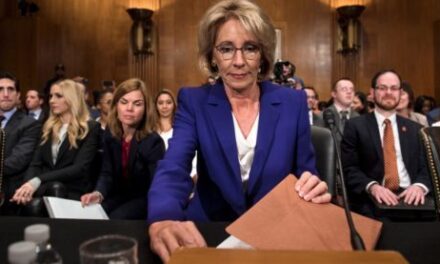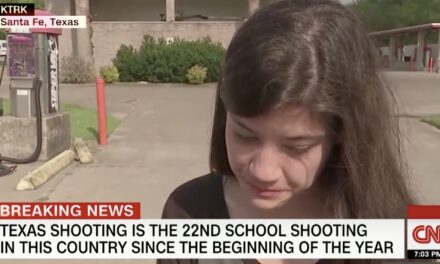By Alexander Russo
Education reporters Erica Green and Liz Bowie are out with a new four-part series about school segregation in Maryland, complete with video snippets and interactive data visualizations.
You might be surprised to know that segregation isn’t just an issue for Baltimore. Maryland ranked third in a 2014 UCLA Civil Rights Project report on most segregated states for black students. And, as in other places, demographic diversification in Baltimore and Howard Counties hasn’t led to integration at the school or classroom levels.
However, the topic is extremely familiar in education journalism at this point. The New York Times’ Nikole Hannah-Jones has written three major pieces about school segregation. Efforts to redraw district boundaries or change policies to encourage greater diversity have been covered closely in New York City, Philadelphia, Washington DC, Los Angeles, and Chicago, among other places. Concerns about possible rollbacks in school integration efforts have been a major theme in media coverage since the election of Donald Trump.
As a result, the expectations for integration-themed journalism are steadily rising. It’s no longer enough to note the resurgence of segregation, the research suggesting its problematic (and moral) importance, and the challenges of addressing it.
And so the questions must be asked: Does the four-part series (plus live event) from the Baltimore Sun cover new ground, or at least approach the topic from new angles? Does it merit all the effort and cost (including a $6,000 EWA Reporting Fellowship) that went into it?
The short answer is that it’s too soon to tell.
The first two parts of the series aren’t in-depth, character-driven pieces along the lines of 2014’s NYT look at the Common Core through one nine year-old’s experiences. And they are both deeply depressing.
But they do tell us tough, complicated stories in which there are some unexpected outcomes (low-income black parents succeeding in pressuring the district to give them priority in a fancy new school intended to be shared with Johns Hopkins University employees).
And Part Three, which focuses on the opportunity gap at a diverse Columbia Maryland high school, may approach that kind of vividness and depth. It’s scheduled to come out tonight online.
“Y’all need to grow up.”
There are frustratingly few obvious bad guys in the Sun series. And that’s probably a good thing. School segregation is the result of an interlocking system of beliefs and dynamics that are usually larger than any single stakeholder group or actors. But the series does suggest that parents, education leaders, universities, and others have all fallen short in various ways.
Part One chronicles a dispiriting community planning process to redraw school attendance boundaries last year in Baltimore County, in response to overcrowding at a number of schools. Decreasing segregation – a goal of some but not many of those who participate – ends up not being much of a priority.
“Our kids are good enough to play together, but they can’t learn together?” says one exasperated parent at one of the planning committee sessions chronicled in the piece.
Part One: Parents left to own devices prioritize their own immediate interests, not integration.
But perhaps relying on parents to focus on integration is the wrong way to go about the process. As noted in the story, “Parents get involved in the schools and advocate for smaller classes and more modern facilities not out of a desire to provide better opportunities for children in general but because they want the best possible education for their own kids. “
The story also reveals a striking lack of leadership. “There were several times that people could have stepped up and they did not,” notes Green in a phone interview, including among those who could have taken more of a role the facilitator, the superintendent, and the board. The board “got back the plans showing virtually no alleviation [of overcrowding], and they could have sent it back,” she says. “They kind of passed the buck to the community. ‘That’s what they wanted,’ they said. Of course that’s what they wanted. But you’re in charge.”
The consultant hired to facilitate the process comes off as a bit of a dud, focusing on technical issues and logistics. “He never wanted to express a real opinion, but ran the meetings in a way that was ‘let’s just get this over’ kind of view,” says Bowie in a phone interview. As for superintendent Dallas Dance, Bowie says “he did what he thought he could do. That’s what he says in the story. Superintendents have a lot of power but in some ways have limited power, they have school boards above them.”
The strong feelings parents expressed about their kids’ schools were no surprise, according to Bowie. “I think we knew where each side stood before we got deep into the reporting… We’ve all covered those stories.” The challenge was “to present both sides as equally valid, that each side was presented in a light that allowed them to feel that their view was valid.”
The reaction so far has been largely positive, according to Bowie. Baltimore County board members discussed the series at a meeting earlier this week, with some of them pushing back against the idea that the board would have blocked the superintendent’s efforts to promote integration if he had pushed harder.
Given the district’s fast-growing enrollment, Baltimore County may have another shot at alleviating some of the segregation in the near future.
Part Two: Three years in, unmet expectations for Henderson-Hopkins
Part Two isn’t much more uplifting, though it does feature the humbling of powerhouse Johns Hopkins University (JHU).
It describes how a beautiful new school — opened in 2014 in partnership with JHU– hasn’t yet lived up to expectations, academic or otherwise. The $54 million architectural gem built by the university was supposed to become a national model and educate students from East Baltimore alongside children whose parents worked at the nationally-renowned university hospital. But that never happened, really, and the school was going through a restart after just three years.
Part Two shows an unusual phenomenon. In most attempts to create diverse student populations, white, middle-class families tend to overwhelm the lotteries and the school ends up skewing to that population. That’s what’s happened several times with intentionally diverse schools in New York City over the past few years. But in the case of Henderson-Hopkins, nearly the opposite happened. “It’s not that Hopkins staff members didn’t want to send their kids to the school,” noted an editorial from the Sun. “It’s that parents in the community wanted it more.”
“It’s not that Hopkins staff members didn’t want to send their kids to the school. They did. It’s that parents in the community wanted it more.” – Sun editorial page
Scheduled to come out online tonight, Part Three focuses on how Howard County schools have been able to stay more integrated than many other districts, but with a lot of tracking. In it, Green profiles a pair of students – one white, the other black – attending the same high school. They’re both friends and both kind of “smart screw-ups,” according to Bowie. But the white kid gets the benefit of the doubt when it comes to things like getting into AP classes, and the black kid doesn’t.
Part Three “is the definitely one that features students most,” says Green. “We haven’t really heard from them, so it’s more evocative.” Yet again, however, nobody’s operating from a place of malice. “Teachers don’t get into this business to screw kids over,” says Green. The kids and parents share some responsibility for the inequitable outcome. “But bias is real and thriving in schools. Everyone in my story definitely agreed with that statement.”
The main lesson from the piece, according to Green, is that putting kids in the same schools and classrooms is “not enough.”
“Teachers don’t get into this business to screw kids over.But bias is real and thriving in schools. Everyone in my story definitely agreed with that statement.” – Erica Green
Green and Bowie were among the lucky few who received EWA Fellowship funding for this project, which included funding for data analysis, travel costs (up to Hartford, for example), and to host an event later this month to discuss the issues raised in the story.
Originally, Bowie and Green had envisioned a much different set of stories. For example, the pair originally thought they’d kick off the series with a piece on a high-poverty, racially isolated school. But one of their editors thought that wasn’t necessary. They also thought they’d write about the utopian ideas behind the creation of Columbia, Maryland, located roughly halfway between Washington DC and Baltimore, which has become more and more minority over the decades. Then last summer, well into the project, they realized that the effort to add address overcrowding and possibly add some diversity to Johnnycake Elementary was an important story. It became Part One.
Ironically, this project took much less reporting time than Unsettled Journeys, Bowie’s 2015 three-part dive into the lives of immigrant students. “We also spent a lot less time on this, believe it or not.” Until the last two months, “We didn’t have time off.”

Green (left) and Bowie (right)
The mixed-race duo of education reporters had worked together many times before, but not on a topic that can be so visceral.
“This was the hardest thing we’ve been through as friends and colleagues,” says Green, who is African-American, describing heated newsroom arguments over issues like race and class. “We debated each other as if we were directly involved.”
“It was interesting to have conversations in our newsrooms about race and what do we expect from people…[Many reporters had made choices that were] not all that different from the decisions of white parents in [Part One].” – Liz Bowie
However, “it was wonderful that we are a black white duo and really helped the series,” says Bowie. “Our different life experiences helped us understand the different views that people took in that story.”
“If I had covered it with someone who thought the same way as I did, it probably wouldn’t have been as strong,” says Green. “I think it made for a stronger series.” For example, the conversations between Bowie and Green led them to go back and report the parent side meeting more closely. “That part needed to be fleshed out more, because it showed a critical moment in the split [between black and white parents] and how everyone was very much aware of power imbalance that could potentially be there.”
Getting white parents to talk candidly about their concerns was a big challenge, according to Bowie. The meeting videotapes and public emails didn’t capture the strength of feeling, and some of the Facebook pages set up to debate the issue were private. “A lot of the things that went on did not go on in the meetings.” But if parents talked to the reporters, “they thought they were exposing themselves to charges of racism.”
Asked about white reporters covering communities of color, Green says that the most important thing is for reporters to make it a priority to talk with and include diverse sources in their stories as a standard practice — not just when a story is about race. “I would just say do it more often, not just when you’re forced to because of the subject matter.”
If white reporters only make it a priority to interview African-American and Latino community members when the topic is race, they’re going to end up with poor results, says Green. “You’re not going to get it. It’s going to be one dimensional. They know why you’re coming, and they’re being kept in a box, excluded from the dominant conversation.” Diverse voices “need to be tapped, and I don’t think they are enough.”
“You’re not going to get it. It’s going to be one dimensional. They know why you’re coming, and they’re being kept in a box, excluded from the dominant conversation.” Diverse voices “need to be tapped, and I don’t think they are enough.” – Erica Green
__
Focused on potential solutions, Part Four of the series looks at Hartford, Connecticut – the same district explored by This American Life and others in recent years – and comes out on Wednesday. The Sun will be hosting a community dialogue about the topic of school integration next week, Wednesday, March 29 from 6:30 – 8 p.m. at Loyola University.
Since the completion of the reporting on the series, Green has been hired to cover national education issues at the New York Times. (Tim Prudente is covering her old beat at the Sun for now.) In fact, she has already left the Sun, gone through orientation in New York City, and started at her new office in DC.
After nearly seven years covering education at the Sun, the story Green says she’s most proud of is covering Renaissance Academy. “It was like extraordinary what we did in featuring young black men on the front page of the paper for succeeding.” The pages were hanging at her desk at the Sun and she plans to bring them over to the Times as soon as she can. You can seen online version of the story here. “Featuring young black males from West Baltimore in that light is one of the proudest moments of my career… We just needed it at the time.”
Crossed fingers that she and Bowie can be equally proud of the segregation series when it is published in full.
Related posts:
TribLive Digs Into Past & Present Of Pittsburgh School Segregation
Lessons from Three Years Covering School Turnarounds and Racial Segregation
New Opportunities – & New Challenges – For 7 Education Journalism Teams
EWA Reporting Fellowship Projects Need To Stand Out
Journalism Fellowships For Everyone!?
Nikole Hannah-Jones: Lack Of Diversity Skews School Coverage
Seven Resources to Help Education Journalists Avoid Racial Blind Spots
ABOUT THE AUTHOR

Alexander Russo
Alexander Russo is founder and editor of The Grade, an award-winning effort to help improve media coverage of education issues. He’s also a Spencer Education Journalism Fellowship winner and a book author. You can reach him at @alexanderrusso.
Visit their website at: https://the-grade.org/













